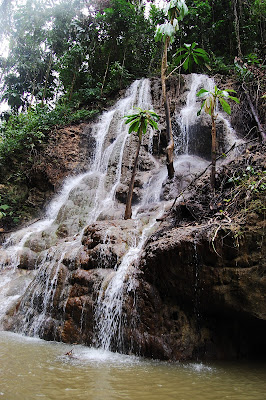Big ones, little ones, some as big as your head! We went coconut hunting on the family's other farm up the hill in Islington. It was fun getting to actually collect the food we would be eating. The farm is like something out of Jurassic Park, I kept expecting T-Rex to come barging through the chest tall grass. We ended up collecting 1 and a half bags worth of coconuts, which gave us enough to have tons of drops, porridge, and curried lentils with some still left over to share!
 |
| A coconut tree |
 |
| Kwao splitting the outer layer to get to the hard coconut seed (what you would buy at the store) |
 |
| A branch with coconuts. You know that the inside will be good if you can shake it and hear water sloshing around inside. |
 |
| A Kapok tree |
 |
| A crocus bag filled with coconuts |
 |
| The boys riding with our coconut stash in the back |
 |
| Drops! shredded coconut in carmelized honey with ginger on a banana leaf |






















































